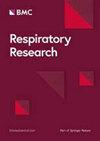Human adenovirus type 7 (HAdV-7) infection induces pulmonary vascular endothelial injury through the activation of endothelial autophagy
Abstract
Background: HAdV-7 is a prevalent pathogen that can cause severe pneumonia in children. Previous studies have shown a significant increase in serum levels of vascular permeability factor (VPF/VEGF) and viral load in pediatric patients with fatal HAdV-7 infection, suggesting potential damage to the pulmonary vascular endothelium. Further research is necessary to elucidate the underlying mechanism.
Methods: The human lung microvascular endothelial cell line-5a and human CD46 mice were used for in vitro and in vivo experiments, respectively. RNA-seq was employed for correlative omics analysis. Viral infection and copy status were examined using transmission electron microscopy to observe virus particles, immunofluorescence to detect the viral protein Hexon, and qPCR to assess HAdV-7 fiber gene copies. Various methods, including ELISAs for VEGF and other injury markers, the CCK8 assay for cell viability, and flow cytometry for endothelium numbers, were employed to evaluate endothelial damage. Acute lung injury severity was evaluated by scoring pathological inflammation and measuring pulmonary vascular permeability. Autophagy activation was assessed by observing autophagosomes and validating marker proteins.
Results: GSEA analysis showed significant enrichment of gene sets related to endothelial functions (barrier, defense, and regeneration) and ALI in the HAdV-7-infected group. GO analysis indicated an enrichment of autophagy-related pathways linked to cell death. Subsequently, successful signs of HAdV-7 infection and replication were observed in the endothelium, including cytopathic effects, intracellular virions, and increased HAdV-7 fiber gene copies. Endothelial injury, including mitochondrial damage, decreased endothelium, and elevated levels of endothelial injury markers such as VEGF, sICAM-1, sVCAM-1, E-selectin, ESM1, MCP1, and IL1β were observed after HAdV-7 infection. Additionally, evidence of leaky lung blood vessels and ALI was observed, including progressive weight loss, elevated pulmonary vascular permeability, and severe lung consolidation. Furthermore, HAdV-7 infection induced autophagosome formation in the endothelium and triggered complete cell autophagy. Importantly, inhibiting autophagic flux reduced VEGF levels and other endothelial injury markers, decreased viral load, improved cell survival rate, alleviated pulmonary vessel leakage, and mitigated lung inflammation.
Conclusions: HAdV-7 successfully infects pulmonary vascular endothelium and replicates effectively, causing injury to the endothelium, high VEGF expression and viral load in the serum, as well as ALI/ARDS. Autophagy inhibitors can alleviate endothelial injury, inhibit viral replication, relieve leakage from the vasculature, and reduce lung inflammation.





